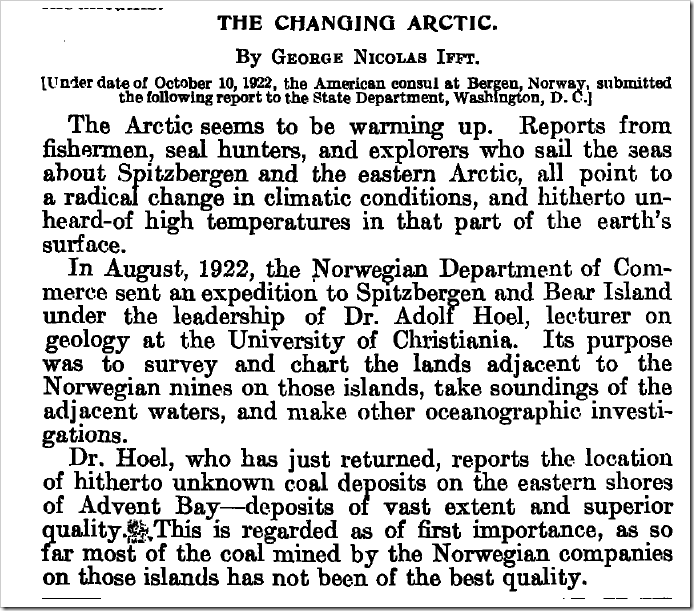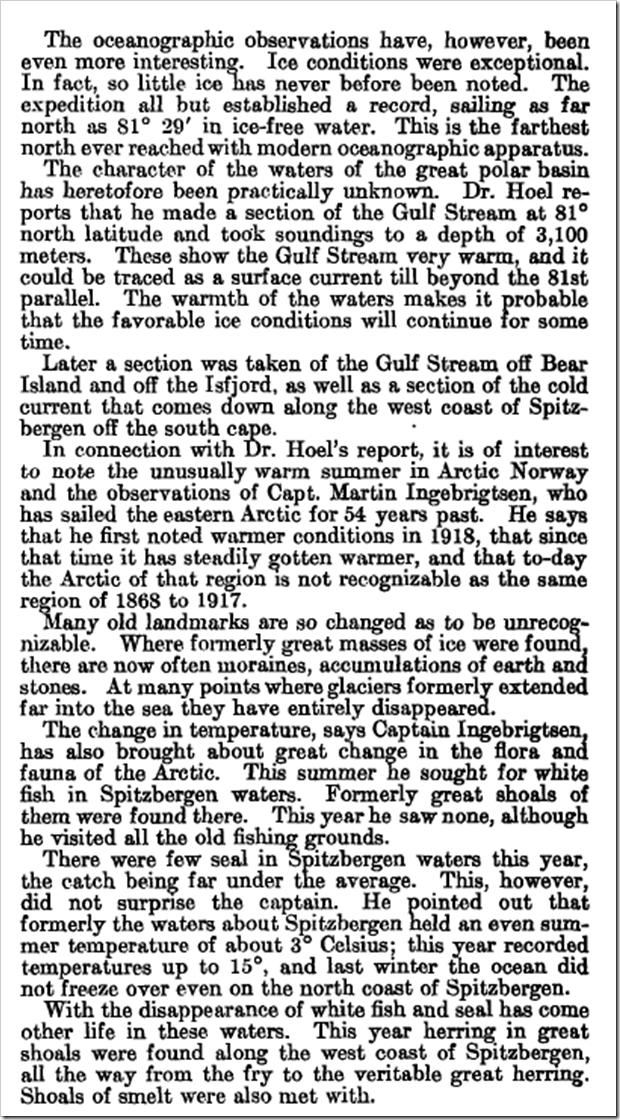.
.
Arctic warming up – 1922 edition. Has climate science got anything to say about it?
By Paul Homewood
In 1922, NOAA knew that the Arctic was undergoing a “radical change of climate”, and was “not recognizable” from the climate of 1868 to 1917.
In November that year, NOAA published this chapter in their Monthly Weather Review:
https://journals.ametsoc.org/toc/mwre/50/11
They must have had proper scientists in those days.








Any chance of a map showing where was ice free versus the current situation?
The interesting section of the article says: „….that he first noted warmer conditions in 1918, that since that time of has steadily gotten warmer, and that to-day the Arctic of the region is not recognizable as the region of 1869 to 1917“.
The important date is the year 1917. War ranged in Europe, and fierce naval warfare around Great Britain, in the North Sea and the Eastern North Atlantic. About up to 10 ships were sunk by U-Boats in early 1917 every day (in 1917 about ca. 6 Mio Tons, or ca. 3000 ships). Sea mines, shelling and bombing churned huge water masses up-side-down. All the battle-field water masses turned up around Svalbard, and surprisingly (?`) air temperatures ‘exploded’ in winter 1918/19 and the subsequent years, causing a massive warming (1919-1922), continuing for two decades until World War II commenced in September 1939; thoroughly analyzed in a book from 2009 and available online: http://www.arctic-heats-up.com/
Solar cycle 15 (1913-1923) lasted 10.1 years and was the shortest solar cycle for 80 years. All the previous six cycles took between 11.3 and 12.1 years i.e. above the long-term average of ~11.1y.
From 1913-1996 only one solar cycle exceeded 10.5 years (SC 20, 11.4 years).
http://en.wikipedia.org/wiki/List_of_solar_cycles
We could now be returning to a phase of longer cycles, as SC 23 (1996-2008) took 12.3 years. Also the number of sunspots is continuing to decline.
NASA: More sunspots mean increased solar activity
http://www.nasa.gov/mission_pages/sunearth/news/solarcycle-primer.html
NB July 1913 – August 1996 = ~83 years, corresponding to a notional Gleissberg cycle or 7 Jupiter orbits of the Sun.
http://www.schulphysik.de/klima/landscheidt/iceage.htm
[see Fig. 4]
Also an interesting difference in how the ice was viewed; warm water/less ice was termed ‘favorable’ (vs ‘catastrophic’).
’22 was a special year.
–
Imagine Xi & Putin wasting no precious time discussing western stability:
“I found it hard, it’s hard to find
Oh well, whatever, never mind” — Nirvana